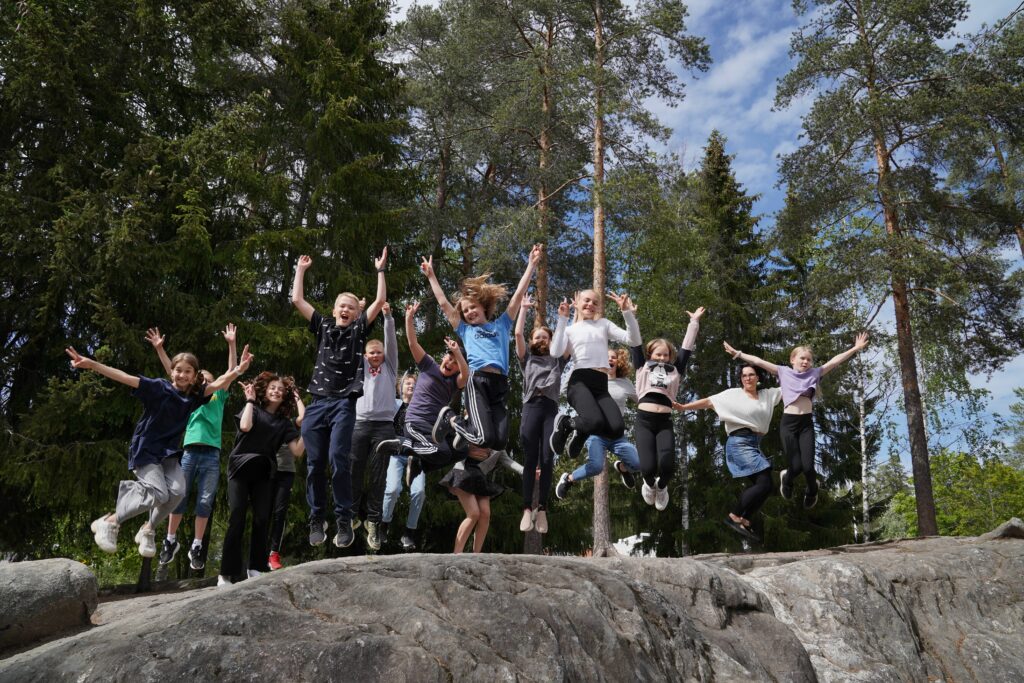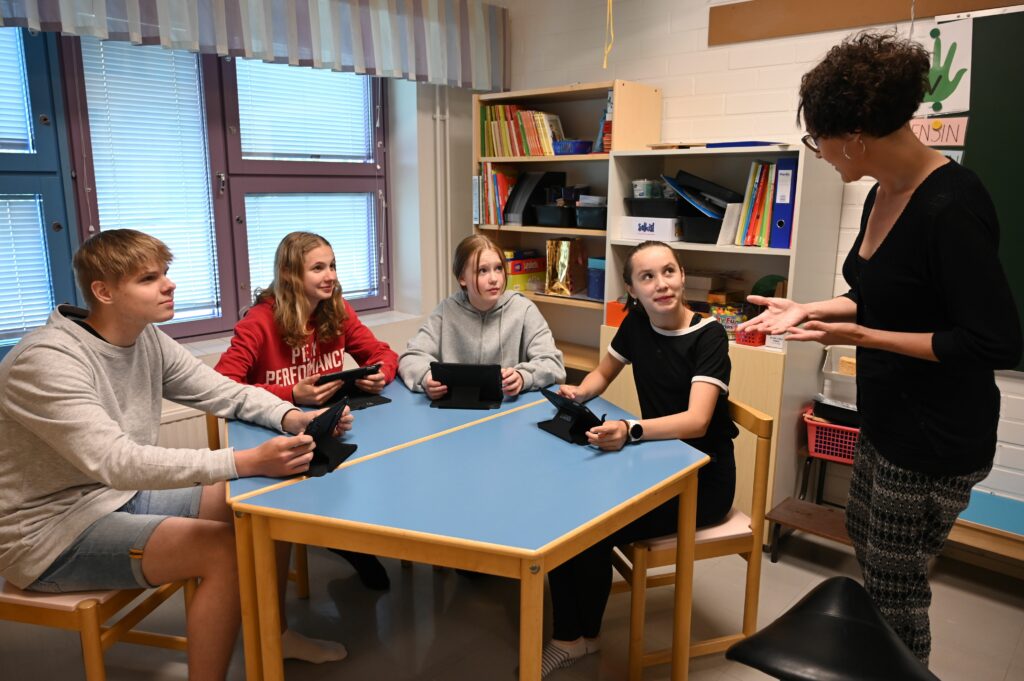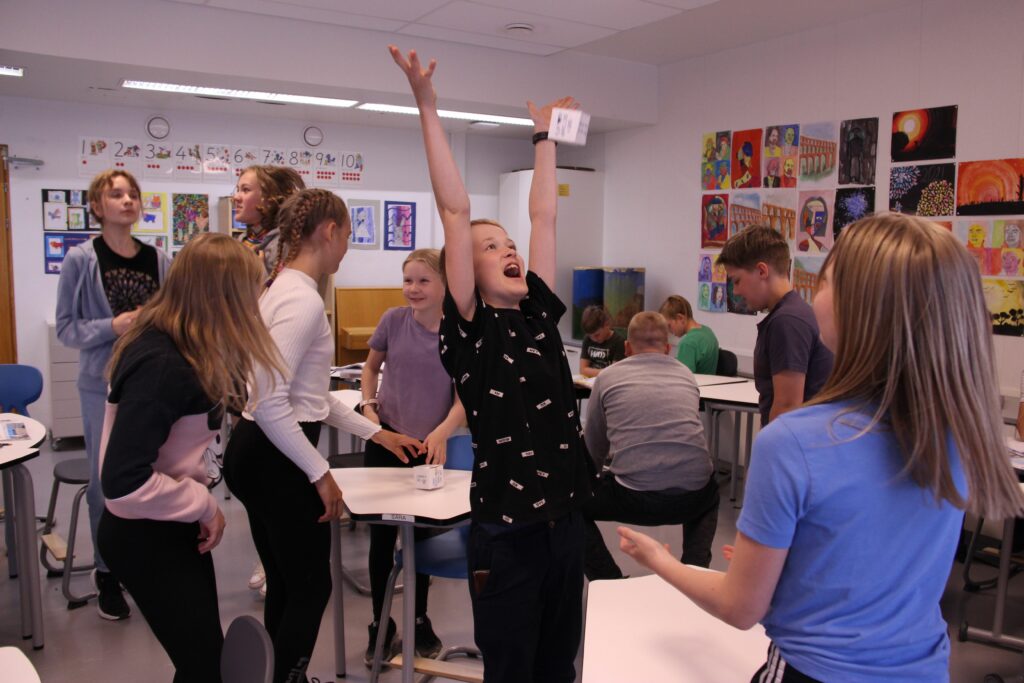I read the book Finnish education in practice What, Why and How edited by Johanna Järvinen-Taubert, Päivi Valtonen and Elena Chukhlantseva with great pleasure and tremendous enthusiasm. The foreword is written by Dr. Kenneth Vella, Ambassador of the Republic of Malta to Estonia and Finland, who expresses his deepest appreciation on the quality of this practical book. The short book is easy to read and sprinkled with concrete legislative texts, scientific points of views, practical examples, personal comments and explanations, first-hand information and practical knowledge. However, the book’s greatest new contribution to knowledge is found in the testimonials of class teachers, special education teachers, principals, assistant principals and trainers and the detailed descriptions of pedagogies in action in the classroom. Each chapter comprises sub-chapters, conclusions, biography and the most relevant information put in knowledge to action framework. This book does exactly what it says on the tin by offering the reader the ‘What, Why and How’ of the treasure found in Finnish education! I hope you enjoy this book review Finnish Education in Practice.
Since 2017 I have been collaborating with the skilled and gifted team of Learning Scoop which organises visits for international experts and granted me a study tour. As an associate researcher at the University of Helsinki in the team of Professor Arto Kallioniemi, I published a book about Finnish excellence in education as I discovered it to share my in-depth descriptions and understandings of the knowledge and good practices underpinning Finnish education excellence. But, the book Finnish education in practice What, Why and How provided me with new and exciting insights about Finnish education. Thus, I recommend this book to all, regardless of prior knowledge of Finnish Education because it provides important complementary reading that introduces and/or stimulates reflection on Finnish education in action that can inform how to optimise students’ learning whilst narrowing achievement gaps to propel health, economic and social wellbeing for all.

Firstly, one of the key advantages of this book is that the three editors: a teacher trainer, a university researcher and a class teacher have been working for decades, resulting in their combined extensive experience of basic education, effectiveness of education and multicultural educational settings. They have also trained teachers, education experts, school owners, students and stakeholders from Finland and from all around the world. Thus, the editors wrote this book to address the kinds of global questions educators in education have raised.
Secondly, the book is very well structured, addressing central themes that are presented in a progressive manner starting with the cornerstones of Finnish education and the national core curriculum; continuing with educational support for lifelong learning and pedagogical leadership; providing advice to parents and explaining how early childhood is a foundation of lifelong learning helping leaners to navigate educational challenges that might arise. I appreciated the scalable way of describing the education system: what is the educational content, why the educational process is important and how the content is mobilised by leaders in partnership with schools, families and communities to realise such wonderful achievements. As we know, Finland promotes a good relaxed and encouraging atmosphere, short school days, little homework, good learning results, narrow attain gaps, and narrow differences between socio-economic statuses. Moreover, Finland’s Human Development Index in 2019 was 0.938 positioning it at 11 out of 189 countries and territories, exceeding what might be expected given GDP per capita.

Thirdly, quality of education in Finland remains a mystery. On the one hand, the country has good results in international examinations such as PISA, TIMMS and PIRLS. On the other hand, compared to other performing countries, an autonomous learner emerges from the values of Finnish education promoted through initial teacher education and professional development. This is made possible by a deep commitment to continuous school improvement mobilised by staff and students’ collaborative reflection in action and reflection on action on how the learning and teaching: 1) facilitates students’ meeting curriculum intended learning outcomes and 2) exemplifies the values of Finnish education of equity, trust, autonomy, co-operation, learner-centeredness and modern pedagogy based on scientific research. A take-away from reading this high value resource is a focus on Finnish education promoting Finnish culture of taking “responsibility” which means that teachers are responsible for their educational mission. This is very different to other education systems that make teachers take “accountability” which means teachers are held accountable for their educational mission.

The book helped me to reflect on how and in what ways this distinctively different approach could be one of the keys to Finnish success in education!
Dr. Mihaela-Viorica Rusitoru, Book review Finnish Education in Practice: What, Why and How
Fourthly, the book is full of practical examples and reflections about the quality of education that all teachers and principals from across the world could put into practice in the classrooms, for instance:
- holistic approach, focussing on traditional subjects, responsible citizenship, lifelong learning, integrated teaching and learning, arts, and crafts, in order to develop well-educated, autonomous and constructive learners;
- co-operation instead of competition is promoted at school and the annual grants or “stipends” are used to encourage students’ personal achievements that amplifies a culture of collaboration;
- regular recesses, breaks and light amounts of homework along with increasing physical activities, sports days and other events under the programme called Finnish Schools on the Move are of huge importance;
- transversal competencies, versatile methods, interdisciplinary modules, motivation strategies and phenomenon-based learning help students understand the relationships between different systems, skills and knowledge and put their knowledge into practice;
- learning environment and partnership-based education in collaboration with libraries, science and nature centres, museums, FabLabs, learning labs and workshops focus on positive pedagogy aiming at preventing difficulties and facilitating deeper and easier learning using school hunts and STEAM – Science, Technology, Engineering, Arts and Maths;
- lessons design based on a socio-constructivist view of learning using 5 steps: warm-up, mapping knowledge, acquiring new information, practising and reflection with the tool called LessonApp available currently for all ingenious and resourceful minds.
- educational support and remedial instruction for students with special educational needs or disabilities, and language as an additional language for migrants which takes an inclusive approach to bridge between mainstream and special education, part-time special education, special classes, activity areas. This uses a three-tiered support model based on three categories of support : general, intensified and special;
- highly educated and respected teachers as well as pedagogical shared leadership combined with distributed and sustainable leadership including social skills, future vision, pedagogical work, educational projects, but also human resources, and administrative and financial management;
- focus on an EDUCARE model and early childhood education as the valuable foundation for lifelong learning paths, based on play, participation, co-operation, international and multilingual skills, thinking, learning and transversal competencies, and diverse forms of expression (verbal, visual, physical, musical, artistic) according to the new core curriculum with the aim to develop the learners’ readiness for learning how to learn. In this regard, the educational plan for each child “is a powerful tool for navigating the road ahead; the road the child and the adults walk together, the road were the child is the curriculum” (page 138);
- parental support focused on understanding the content instead of memorising it, giving the necessary time for playing to meet vital developmental milestones instead of starting school earlier, putting accent on the quality of teaching and learning instead of on the quantitative length of the school day or excessive, stress inducing levels of homework, concentrating on academic subjects, artistic and practical subjects (arts and practical subjects are 1/3 of all the lessons) and avoiding comparison because: “comparing the child with other children or other siblings is not appropriate; their development should be compared only with their earlier skills. Comparison with siblings, relatives or schoolmates can easily cause jealousy and negative feeling, as well undermine the child’s self-esteem” (page 149).

Finally, students are seen as change agents and co-designers in a society called to put at their disposal the appropriate learning environment that “should invite children to create their own content in it!” (page 140). Being the happiest place in the world, in Finland there are no dead-ends, but rather a joy of learning at school realised with a free education, publicly funded schools, constructive feed-forward formative and self-assessment and no standardized evaluation until the matriculation exam, support provided for demotivated children along with building co-operation between home and school, as well as the importance of recreation, rest and sleep. The book identifies also the future direction of Finnish education where the accent will be put on learning in the real world that develops transferable skills: the way of thinking, the way of working, the mastery of tools and the participatory citizenship. Consequently, throughout the book, I can say that the What, Why and How of the Finnish education’s promotion of learning is described, and critically reflected on.
In conclusion, the book reminded me of what I discovered when I was in Finland the first time: Finns are not educated for PISA results, but for life, and for this reason, Learning Scoop wants to share, through this book, the wisdom on What, Why and How to better educate learners for a better society in the future! I thus recommend this book to all readers from the four corners of the globe: students, parents, teachers, principals, experts in education, policy-makers and other stakeholders eager to get in a few hours, the main milestones of one of the most successful and joyful education systems in the world! I hope you enjoyed this book review Finnish Education in Practice: What, Why and How.
Dr. Mihaela-Viorica Rusitoru
Director Centre of Scientific Excellence Group Actissia, Paris France


